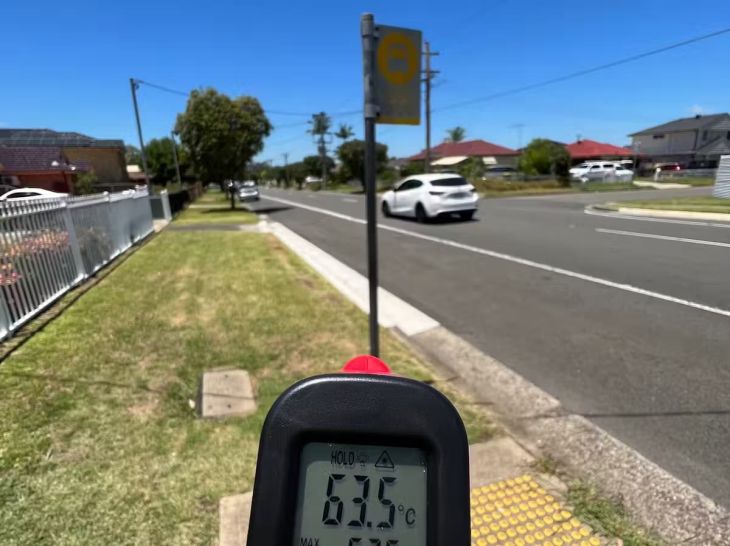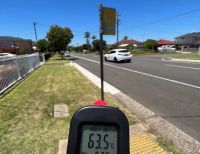
At this bus stop in Fairfield West, the temperature in the sun hit 63.5°C in January 2023. Photo: Sweltering Cities/Kurt Iveson
Multibillion-dollar transport projects create headlines, and politicians love to bask in the glow of a successfully completed project such as Sydney’s new Metro. This service will change many people’s lives for the better.
In stark contrast with the shiny new Metro stations, the bus network is suffering from under-investment. Our survey of thousands of suburban bus stops, conducted with advocacy group Sweltering Cities, found many lack shelter, seating, signage and even stable surfaces.
Fixing Sydney’s busted bus stops might not grab headlines, but it will greatly improve access to our public transport network. It will also provide comfort and dignity for the many people who rely on buses. Sydneysiders make more than 600,000 bus trips every weekday.
Extreme heat and rain are becoming more frequent with climate change. This makes the task of providing bus riders with adequate shelter even more urgent.
The weakest link in the network
Transport network planners often think about bus stops as points along a route rather than places – they appear merely as dots on a network map.
But, for passengers, bus stops are public places in their neighbourhood. If they lack basic amenity such as shade, seating, signage and smooth surfaces, they become the “weakest link in the journey chain”, either discouraging or preventing people from using bus services. Transport researchers are increasingly recognising the importance of bus stop infrastructure for making buses accessible – especially for riders who have mobility or health issues.
In cities such as Atlanta and New York in the United States, organised groups of bus riders are agitating for improvements. They not only want to improve access, but also to combat the indignity of waiting for buses in places that offer them no care or protection.
















